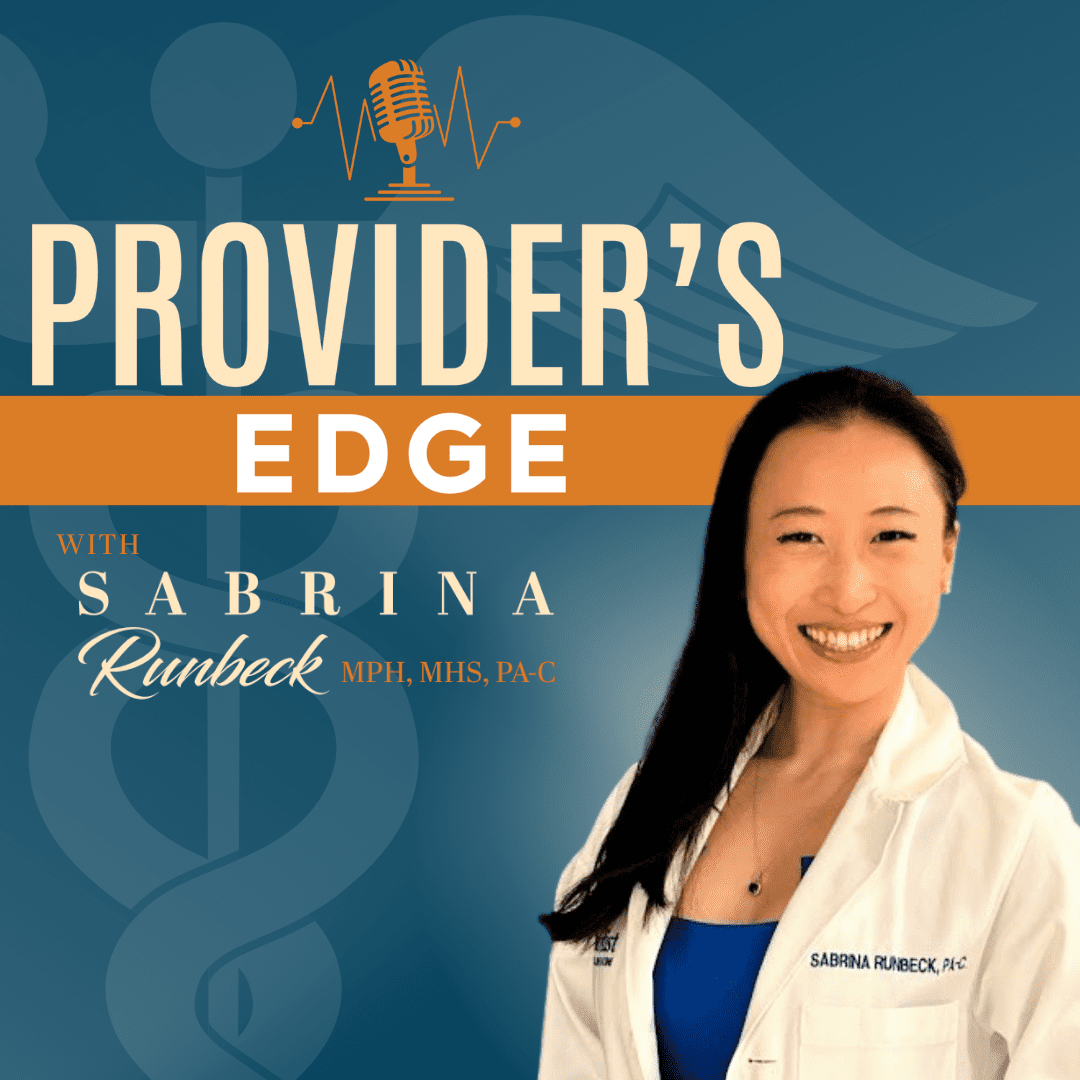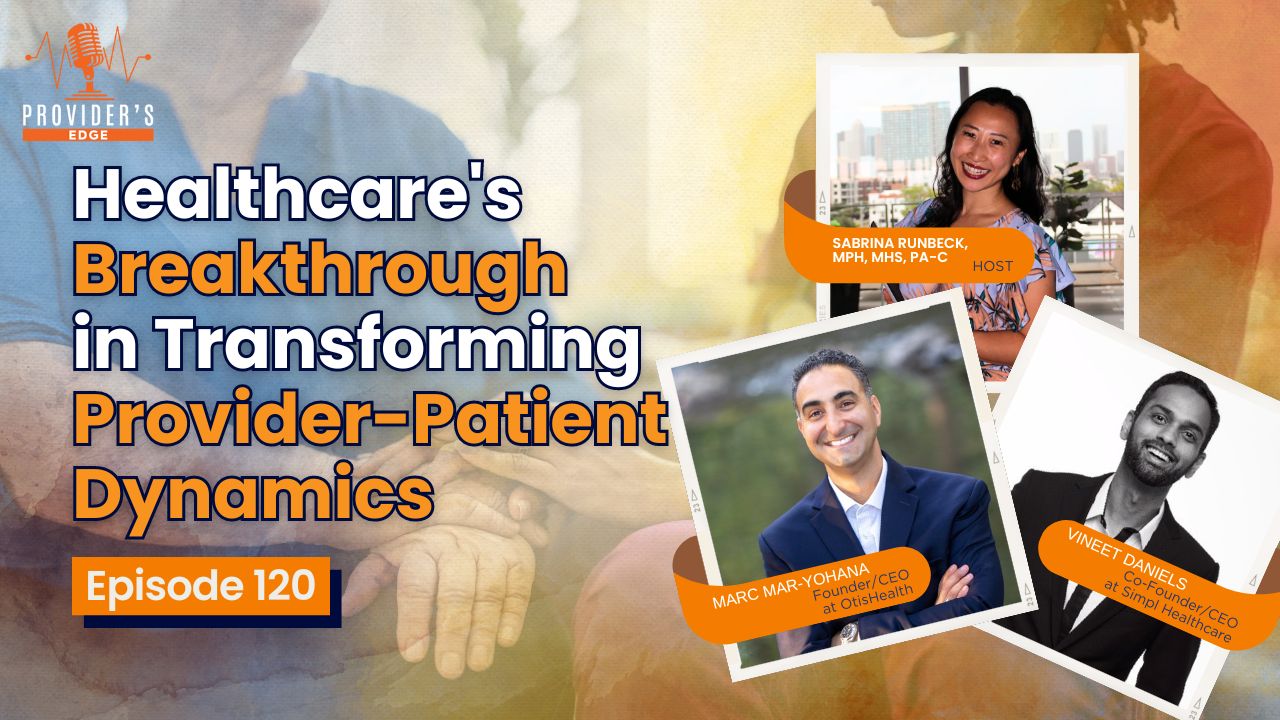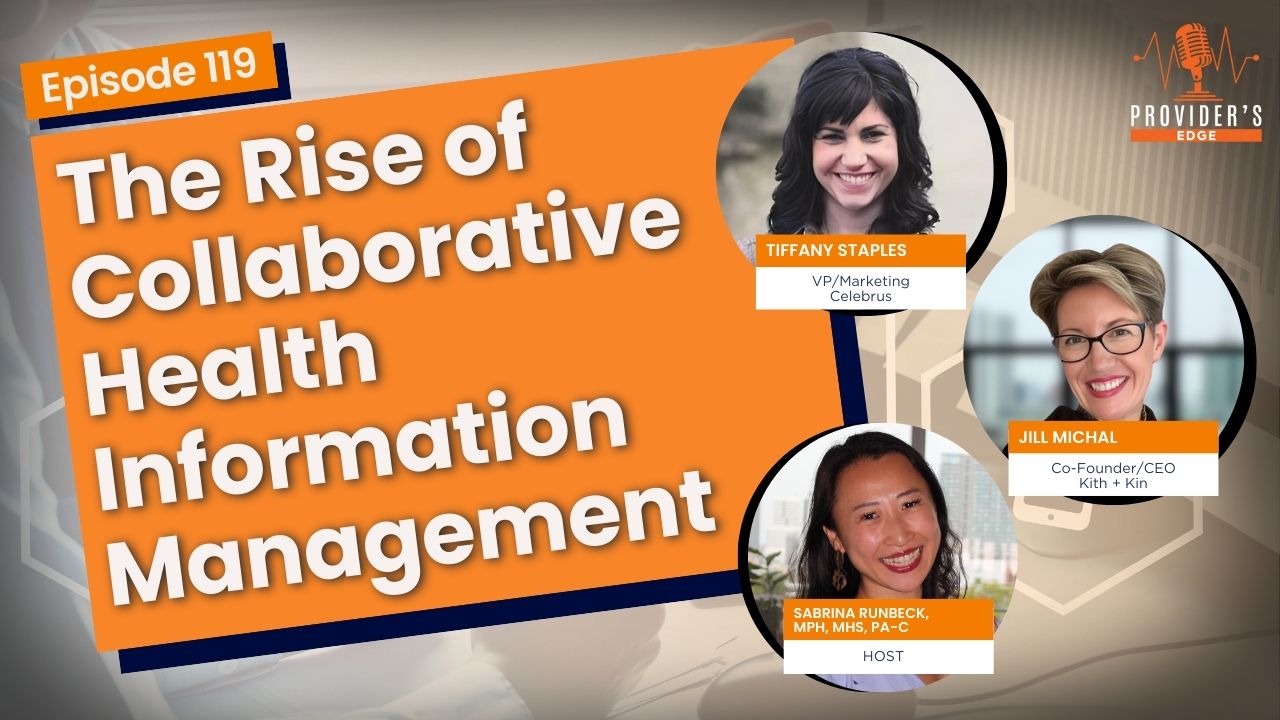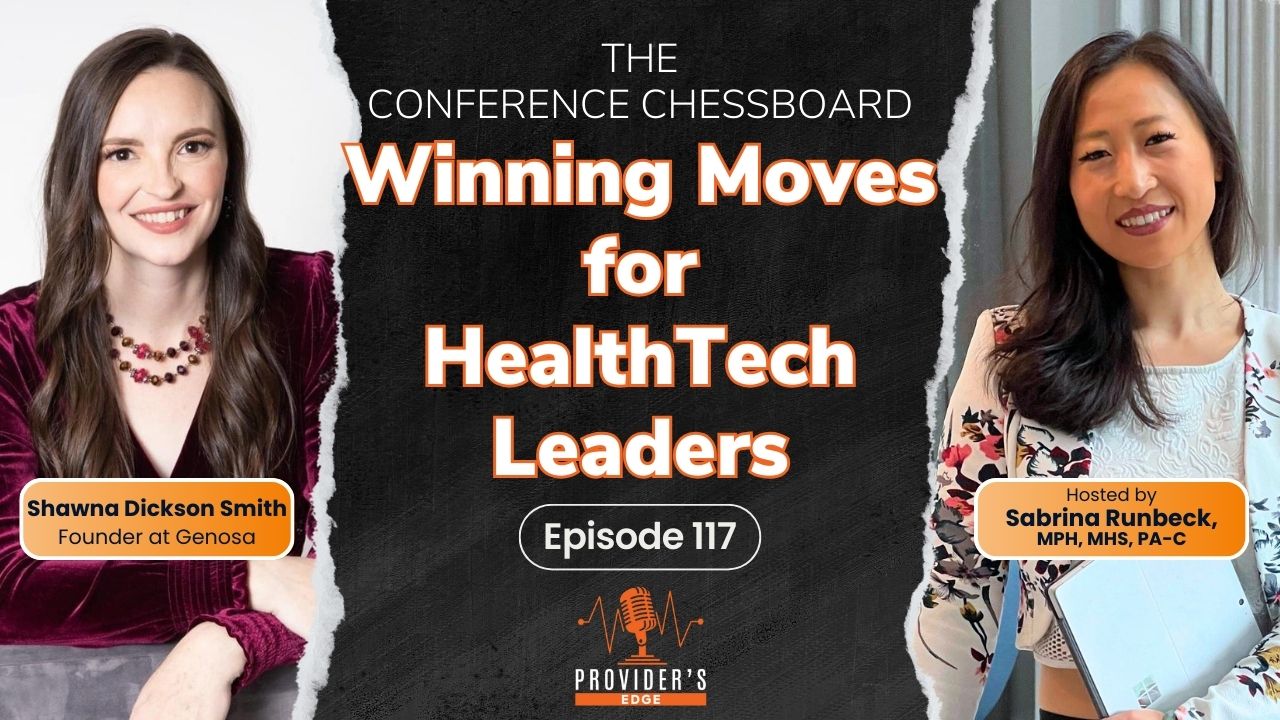
From Hours to Minutes:
Healthcare's Breakthrough in Transforming Provider-Patient Dynamics
The healthcare industry faces a significant challenge: provider-patient interactions from scheduling to billing take 2-3 hours and involve 3-4 people. This inefficiency hinders quality care and contributes to provider burnout. However, new solutions are emerging to reduce this time to minutes, potentially reshaping healthcare.
Vineet Daniels explains, "We are building product lines that allow efficient provider-patient interaction across all buckets: scheduling, note-taking, interoperability, and billing."
This approach aims to streamline every aspect of patient-provider interaction, eliminating bottlenecks. By improving efficiency in scheduling, documentation, data sharing, and billing, these solutions could free up valuable time for patient care.
Listen anywhere you get your podcastin' on.
Live Interview

1 The Current State of Provider-Patient Interactions
Healthcare providers and patients face significant time constraints. From scheduling to billing, inefficiencies create challenges for all. Providers are overwhelmed by extensive documentation, often prioritizing paperwork over patient care. Patients struggle with complex scheduling systems and long wait times.
These issues impact care quality and patient satisfaction. Rushed providers may deliver suboptimal care, while patients become frustrated with limited face-to-face time. These inefficiencies also contribute to provider burnout, a growing concern in healthcare.
Addressing these challenges is essential for improving patient outcomes and provider well-being. The healthcare system needs solutions to streamline processes, creating a more efficient and satisfying experience for everyone involved.
2 Simple Healthcare: A Game-Changer in Healthcare Efficiency
Picture a healthcare system where provider-patient interactions—from scheduling to billing—take just 5 to 10 minutes, managed by one person. This vision is becoming reality through innovative healthcare tech companies.
These solutions reshape healthcare by streamlining processes with advanced technology. They address time-consuming administrative tasks, reducing burdens on providers and patients.
The outcome? Providers focus more on patient care—their primary expertise. This shift improves efficiency and care quality. Patients enjoy shorter wait times and more focused attention from providers.
By simplifying interactions, we're progressing towards a patient-centered healthcare system. Technology enhances rather than complicates human aspects of care, benefiting everyone involved in the healthcare process.
3 The Technology Driving the Transformation
At the core of this healthcare improvement is technology focusing on efficiency and user-friendliness. These systems combine scheduling, intake, note-taking, and billing into one smooth process. They're created with both providers and patients in mind, ensuring technology improves the healthcare experience.
These solutions address every step of the patient journey, from booking appointments to finalizing bills. By automating and streamlining processes, they greatly reduce administrative tasks that often overwhelm healthcare providers.
The outcome is significant: providers spend less time on paperwork and more on patient care. This change boosts healthcare delivery efficiency and improves care quality, creating a positive impact for everyone involved in the healthcare process.
4 Benefits for Healthcare Organizations
.For healthcare organizations overseeing multiple clinics, these efficient systems provide key advantages. They allow for EHR system standardization across consolidated clinics, addressing a significant industry issue. By simplifying processes and reducing administrative work, these solutions make practices more attractive to potential providers.
This standardization enhances data consistency and accessibility across locations, improving patient care coordination. It also optimizes operations, minimizing errors and boosting overall efficiency. With less administrative burden, healthcare professionals can focus more on patient care, potentially improving outcomes and job satisfaction.
These systems help organizations quickly adapt to evolving healthcare regulations. By increasing practice efficiency and provider-friendliness, they assist in attracting and keeping skilled healthcare professionals.
5 The Patient Perspective: Enhanced Care and Convenience
From a patient's perspective, these technological advancements offer a more satisfying healthcare experience. Streamlined appointments reduce waiting room time, allowing more quality time with providers. Patients get care faster and with less hassle.
Improved communication and transparency throughout the process alleviate anxiety and build trust. Patients feel more informed and involved in their care decisions. This engagement can lead to better adherence to treatment plans and improved health outcomes.
Patient-centered care delivery allows providers to focus more on individual needs and concerns. This personalized approach, combined with time-saving efficiencies, contributes to a positive healthcare experience and potentially better health outcomes. The result is a more efficient, effective, and patient-friendly healthcare system.
6 Complementing Provider Efficiency with Patient Empowerment
While improving provider efficiency is crucial, empowering patients and caregivers is equally important. New systems enable quick, secure access to health data, reshaping healthcare. These platforms allow patients to retrieve and share their health information rapidly.
This swift data access enhances care coordination and decision-making. Patients become active participants in their health journey, making better-informed choices. Caregivers gain valuable insights, easing the management of complex health information.
The ability to quickly share data with various providers ensures comprehensive care. It reduces duplicate tests, minimizes errors, and enables timely interventions. This patient-centric approach not only improves individual care but also contributes to a more efficient healthcare system overall. The result is a more connected, responsive, and effective healthcare experience for all involved.
7 The Future of Healthcare Tech: Integration and Collaboration
As we look ahead, the focus is on building a seamless ecosystem benefiting providers and patients alike. This includes adopting AI and advanced technologies to refine processes and bolster decision-making.
The healthcare industry is moving towards integrated systems that communicate effortlessly across platforms and organizations. This integration aims to create a holistic view of patient health and improve care coordination.
Significant challenges persist, especially in data sharing and interoperability. Addressing these issues requires industry-wide collaboration and commitment to prioritizing patient care. The goal is a healthcare system where information flows smoothly and securely, enabling better, personalized care while maintaining patient privacy and data security.
This future promises improved health outcomes and a more efficient healthcare system for all.
Key Takeaways for Healthcare Tech Founders
For healthcare tech founders, the path forward is clear: create user-centric solutions addressing real-world challenges. Success hinges on adapting to evolving provider and patient needs. Industry partnerships and collaboration are vital for expanding reach and impact.
Vineet Daniels emphasizes, "The goal for us is that if you make a product that is really good, it's amazing your customer will love it for one customer. There are going to be a lot of other customers like that that are going to want to use the product."
The healthcare industry stands at a pivotal point. By prioritizing efficiency and patient-centered care, we can build a healthcare system that serves everyone better.
What actions can you take to speed up this positive change in your healthcare organization?
Conclusion
The healthcare industry is at a turning point. Current innovations are reshaping the provider-patient relationship, not just boosting efficiency. By cutting administrative time from hours to minutes, these technologies enable more personalized, effective care.
Healthcare tech founders and leaders face a unique opportunity. The task is to adopt these changes, keep innovating, and focus on the main goal: improving patient outcomes and provider satisfaction.
Moving forward, we need to consider how to use these tools to build a more compassionate, efficient healthcare system. What part can your organization play in this shift? How might you use these ideas to enhance your operations and positively impact patient care?
Recommended Podcast Episodes
Are you still relying on traditional patient portals to manage health information? If so, you're missing out on a transformative shift in healthcare technology.
"If you feel like you need to hire somebody, you probably should have hired them yesterday." - Cori Stuart
Be a guest on our show
The Provider's Edge show is always looking to feature healthcare change-makers and celebrate the work they are doing to improve healthcare.
Together, we can encourage other healthcare entrepreneurs and startup founders to up-level their businesses.
If you or someone you know could be a good fit as a guest on the show, please click on the bottom below to apply as a speaker.
Healthcare Entrepreneurs!
I can help you gain visibility and credibility in the right circles so you can accelerate your mission and profitability!
After overcoming burnout working in surgery, I went back to my roots in neuroscience and public health. I learned the importance of building key human relationships with my team throughout our organization.
While helping healthcare executives and entrepreneurs to get out of the day-to-day operation of their practice, I realized I needed more visibility and more connections to reach my ideal clients.
Once I set out to be highly visible in the right circles, I was able to leverage my network of strategic partners to convert clients 5x higher than any other marketing channel I had tried previously.
Now I help healthcare change-makers to accelerate their impact and increase profitability by gaining visibility and credibility with the right strategic partners.
My clients no longer worry about where their next client is coming from, the need to plan additional budget for ads spending, or losing the ability to connect with others because their social media account is shut down.
If you want to share your social mission with the world and gain pivotal supporters that become loyal clients... then you are in the right place, with the right consultant who is also a recovered clinician.




